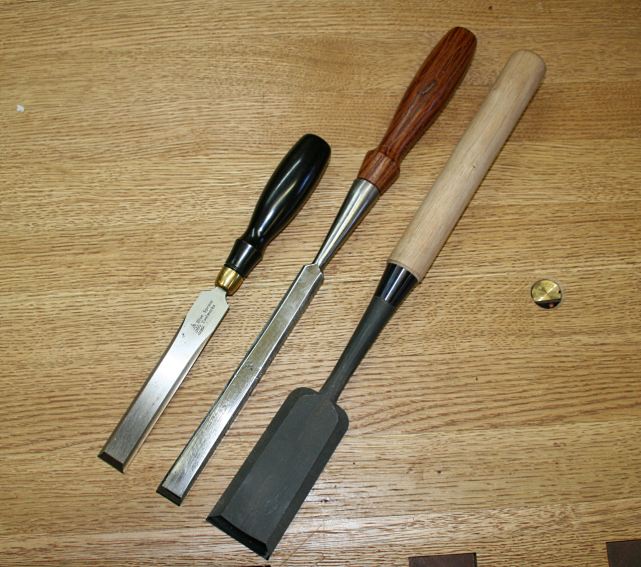In a light paring cut, sharpness rules. In a heavy paring cut, the shallowest bevel angle rules.
I had koyamaichi chisels, and I never noticed any inability of them (bench chisels) to hold their edge at the same bevel angle I have all of my chisels at (high 20s). I have less strong chisels that I use to mortise bench plane blanks (they are iyoroi - though ) that could do several large bench plane mortises and take very little in repair, they can one plane blank at a time with nothing more than a finish stone touch up- and at a lower angle than any other chisel that I have, which is why I use them - laziness. Economy of effort. Whatever you want to call it.
The one real life issue that I have with japanese chisels is that in heavy paring work that has the potential to abuse an edge (I guess malleting work, too), if the edges are abused and wear faster than the rest of the chisel, it's not as quick with a japanese chisel to sharpen that out as it is with a western chisel where you can grind most of it out.
I did have a koyamaichi blue steel parer at one point, and I don't think it took a back seat to anything, it certainly didn't need 32.5 degrees.
Though there's an obsession with having the entire bevel perfectly flat in a japanese chisel, if I had to choose for paring, I would hand grind the primary at 25 degrees and make the lightest kiss of a finish stone edge at a slightly higher angle if it was needed. I really don't like a big blunt steep primary bevel for paring cuts like one would make on tenons.
(I am now just using a trio of boxwood handled marples parers - real parers, not long bench chisels, and I believe they were marked chrome vanadium or something. They are better than blue handled chisels I had, but technically by no means close to the japanese parers I had. But they sharpen very fast and if they take damage, it's gone in two minutes).

































